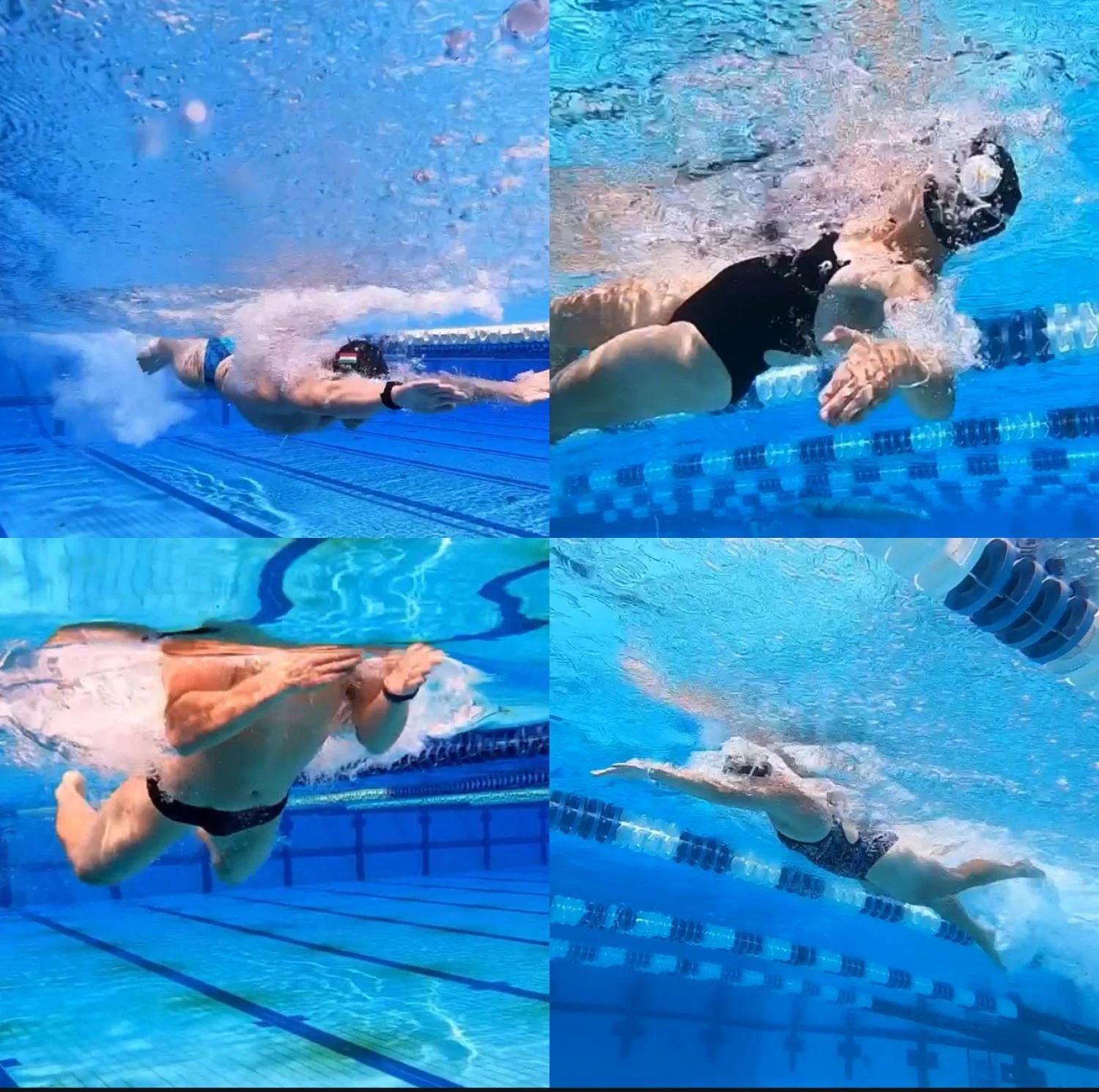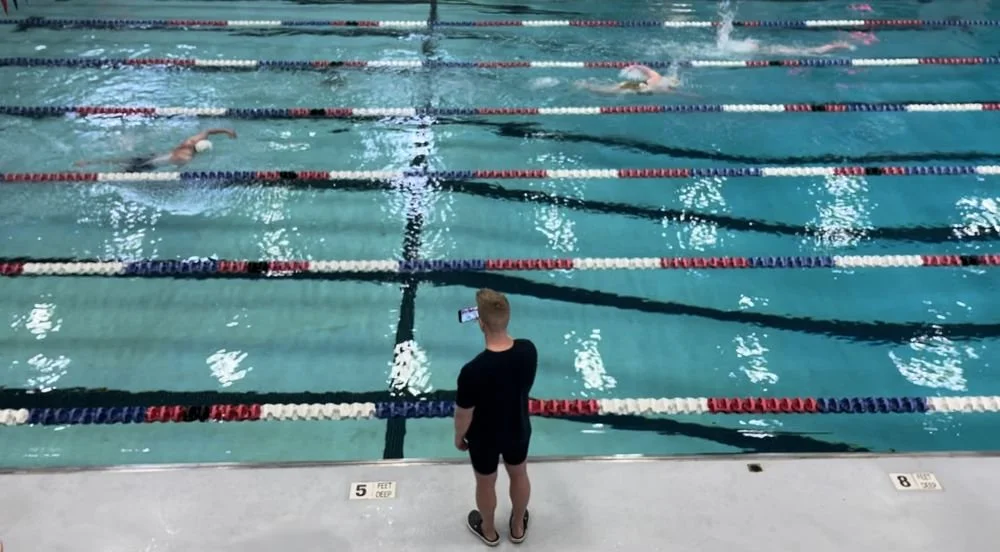Individual Medley Swimming: Stroke Order, Turns, and Training Tips
/Why the IM Is the Ultimate Test
In more than two decades of coaching, I’ve seen every event test swimmers in different ways — but nothing compares to the individual medley. Medley swimming isn’t just about raw speed; it’s about adaptability. The IM forces you to master all four strokes, handle three challenging transitions, and maintain form under fatigue.
If you’ve ever asked, “What is medley swimming?” or “What’s the order of the individual medley?” — this article will walk you through the details, from stroke order to turns, relay differences, and proven training tips. Along the way, I’ll share coaching insights I’ve used with athletes chasing personal bests — and in some cases, Olympic Trials cuts.
IM Program
Master all four strokes with targeted technique drills. Build efficiency, power, and speed in every phase of your IM.
What Is Medley Swimming?
Simply put, medley swimming combines butterfly, backstroke, breaststroke, and freestyle into one continuous race. Unlike a freestyle-only event, the IM rewards the most complete swimmers. Every weakness gets exposed — whether it’s breaststroke timing, backstroke tempo, or freestyle finishing speed.
Swimmers race IMs at multiple distances:
100 IM – A sprint of precision and control, where one missed stroke can cost you the race.
200 IM – Arguably the hardest racing distance. Not a true sprint, but no time to build into it.
400 IM – A brutal endurance test that demands equal parts pacing and toughness.
For many young swimmers, the IM becomes the event that shows where their training is strong — and where gaps remain.
Dan Daly on Coach session
The Individual Medley Order
The individual medley swimming order is always:
Each stroke brings a unique demand:
Butterfly – Explosive start, rhythm, and patient power.
Backstroke – Tempo and underwater discipline.
Breaststroke – Efficiency is key; the slowest stroke, but the biggest opportunity to gain ground if done well.
Freestyle – The anchor leg; athletes empty the tank here.
This medley swim order was designed for fairness, balancing power with control. Knowing the order helps you strategize your splits and energy.
Medley Relay vs. Individual Medley
One of the most common questions I get as a coach is: “What’s the difference between the IM and the medley relay?”
Here’s the breakdown:
- Individual Medley Order – Butterfly → Backstroke → Breaststroke → Freestyle
- Medley Relay Order – Backstroke → Breaststroke → Butterfly → Freestyle
Why the change? In relays, the first leg must be backstroke since it begins in the water. That’s true whether it’s the 100 medley relay order or the 200 medley relay order.
The individual medley relay isn’t an official event — but people often mix up the terms. When you hear “medley relay swim,” think of the four swimmers, each taking one stroke in sequence.
Records and Benchmarks: The 200m IM
Ask any competitive swimmer: the 200m individual medley world record is one of the crown jewels of the sport. It’s short enough to demand all-out speed but long enough to punish mistakes in turns and pacing. Watching world-class athletes like Michael Phelps or Katinka Hosszú crush this event shows how complete medley training can unlock performance.
As a coach, I often remind swimmers that these records aren’t just about talent — they’re about nailing the fundamentals. Stroke mechanics, efficient breathing, and perfect transitions are what shave seconds off times.
The Art of Individual Medley Turns
Turns in the IM are where races are won or lost. I’ve watched swimmers with excellent strokes fall behind because they botched a transition. Let’s break them down:
Butterfly to Backstroke – Requires a two-hand touch. I coach athletes to keep it compact and immediately roll into a streamlined push.
Backstroke to Breaststroke – There are several legal back-to-breast IM turns - open/touch, crossover, and bucket - each varying in speed, difficulty, and DQ risk, with crossover being the most technical, but fastest when done well.
Breaststroke to Freestyle – Another two-hand touch. The key is to explode off the wall and establish a strong breakout stroke.
Drilling individual medley turns under fatigue is essential. It’s one thing to practice them fresh, another to execute with heart rates at race level, learning to transition and shift gears from one stroke to the other.
Individual Medley Training: Building Complete Swimmers
When I create individual medley training plans, I use a holistic approach:
Stroke Equalization – Don’t just double down on your best stroke. Train your weakest stroke twice as often. A balanced swimmer is a dangerous swimmer.
Combo Workouts – Sets like 8x100 (25 fly / 25 back / 25 breast / 25 free) simulate race pace, and flow. These also reveal where rhythm breaks down.
Endurance Meets Speed – Blend aerobic sets with pace work. The IM isn’t just about lasting — it’s about lasting fast.
Turns and Transitions – Dedicate full practices to turns and breakouts. Rehearse until they become automatic.
I also emphasize recovery, nutrition, and dryland training. The IM asks your body to move in every possible way; strength and mobility outside the pool make it possible to hold form when it matters.
Lessons That Always Pay Off in IM Training
Over the years, I’ve found that the best swimmers aren’t just the ones grinding out endless laps — they’re the ones investing in the little details that truly add up. That’s why I put together this short video:
Things Swimmers Won’t Regret Doing
- Doing drills – Technique is the foundation; you’ll never regret time spent on efficiency.
- Working on turns – Especially in the IM, clean turns can save more time than another 1,000 yards.
- Practicing starts – A powerful, confident start sets the tone for the entire race.
- Sprinting – Even distance swimmers benefit from speed work; it sharpens stroke power
- Using equipment – Fins, paddles, and snorkels help isolate weaknesses and build strength.
- Dryland – Core, mobility, and strength training out of the pool carry over directly to better strokes.
These habits don’t just prepare you for the 100, 200, or 400 IM — they make you a more complete swimmer across every event.
Practical Tips for Swimmers and Coaches
Study Race Videos – Watch how elite swimmers manage transitions. Notice their underwater control.
Track Splits – Don’t just record times; analyze whether pacing aligns with strengths and weaknesses.
Mix Distances – Train both 200 and 400 IMs; the endurance of the 400 carries into the 200, and the speed of the 200 sharpens the 400.
Dryland Matters – Mobility for shoulders, hips, and thoracic spine is vital for transitions between strokes.
Most Important Dryland Patterns for Swimmers:
Take the Next Step in Your Training
Want structured dryland workouts designed specifically for swimmers? Join my Monthly Dryland Training Subscription — with guided strength, mobility, and recovery sessions that support faster swimming in the pool.
Dryland for Each Stroke to see how targeted land-based training supports Freestyle, Backstroke, Breaststroke, and Butterfly.
Final Takeaway
The individual medley isn’t just another event — it’s a showcase of complete swimming. It demands balance, strategy, and resilience. If you want to grow as an athlete, focus on mastering the order of medley swimming, sharpening your turns, and building training plans that develop all four strokes.
Remember — excellence lives in the fundamentals. Master those, and your IM will not only improve — it will transform the rest of your swimming too.
Author Bio
Dan Daly is a CSCS-certified swim coach with over 20 years of experience helping athletes—from beginners to Olympic Trials qualifiers—reach their potential. He is the founder of Train Daly and creator of the Advanced Swimming Performance System.
Hello, World!


